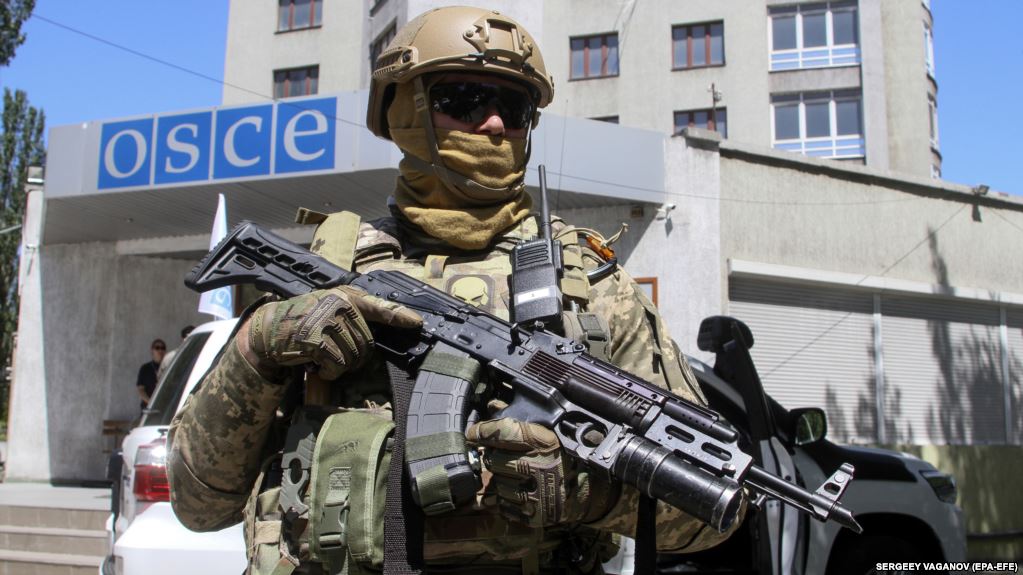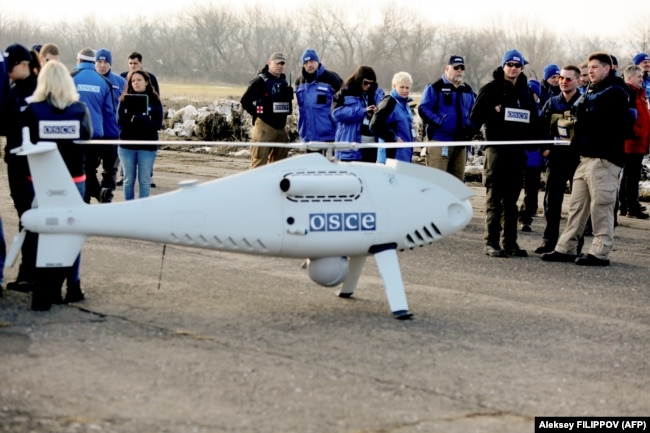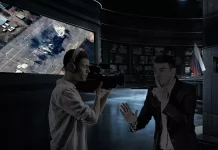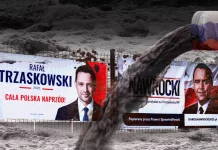
By Polygraph
“Alexander Hug is well informed. For four years he’s been working in the Donetsk and Lugansk People’s Republics, and in Ukraine as the head of the OSCE mission. They basically have open access to any place in the country. I’m not sure about western Ukraine, but here they have free access. They are fully informed. The statement he voiced today is confirmation of what we’ve been broadcasting from here for four years. The armed people here are the locals … But Kyiv naturally began screaming that it had been betrayed. The OSCE destroyed the fairytale that Ukrainian television has been broadcasting.”
FALSE
Russian media seizes on OSCE interview to push Kremlin line on eastern Ukraine
On October 26, Alexander Hug, deputy head of the Organization for Security and Co-operation in Europe’s monitoring mission in Ukraine, described in a Foreign Policy magazine interview the “challenges and frustration” of monitoring “Europe’s forgotten war.”
In comments that have since been amended, Hug reportedly said that the OSCE had not seen direct evidence of Russian involvement in eastern Ukraine.
Russian media quickly reacted to the initial interview. Russia-24 state television posted a report on YouTube headlined “BREAKING! OSCE Finally Speaks Up: No Russian Military Presence in Donbass; Kiev Lied!” In it, Correspondent Andrey Rudenko played up Hug’s statement, using it to back the Kremlin’s well-established narrative about eastern Ukraine.
“Alexander Hug is well informed. For four years he’s been working in the Donetsk and Lugansk People’s Republics, and in Ukraine as the head [SIC] of the OSCE mission. They basically have open access to any place in the country. I’m not sure about western Ukraine, but here they have free access. They are fully informed. The statement he voiced today is confirmation of what we’ve been broadcasting from here for four years. The armed people here are the locals.”
Rudenko noted the presence of volunteers from Russia, Belarus, Italy, Poland and the U.S. in eastern Ukraine – who, he said, account for 10% of the fighters, although those countries are not themselves viewed as parties to the conflict.
“But Kyiv naturally began screaming that it had been betrayed. The OSCE destroyed the fairytale that Ukrainian television has been broadcasting,” Rudenko said.
On October 27, Hug told the Ukraine Crisis Media Center in an interview that the text published by Foreign Policy of his interview “was misleading and did not reflect his opinion.”
“As you know, we do not conclude on the facts we establish and we do not provide evidence. Estimates, facts speak for themselves,” Hug said.
When pressed on his original comments regarding whether or not he had seen evidence of Russian military involvement in Ukraine, Hug reiterated that the monitoring mission does not draw conclusions from the evidence it gathers.
A Correction to the Original Report
Foreign Policy has since offered the following correction and clarification:
“Correction, October 25, 2018: Alexander Hug is the deputy head of the OSCE’s observer mission in Ukraine. An earlier version described him as the head. Clarification, October 25, 2018: In an earlier version, Hug stated that OSCE had not seen direct evidence of Russian involvement in eastern Ukraine. We have removed this remark, as it did not convey his intended view. He goes on to cite facts and observations that his monitors have recorded.”
In the most up-to-date version of the Foreign Policy article, Hug stated regarding the situation in eastern Ukraine:
“If the question is what we have seen on the ground … we have seen convoys leaving and entering Ukraine on dirt roads in the middle of the night, in areas where there is no official crossing. In one border area, we’ve also made this public, including some footage we have put out. We have seen specific types of weapons that we have described in detail, including electronic warfare equipment. We have spoken to prisoners taken by the Ukrainian forces who claim to be members of the Russian armed forces fighting on rotation in Ukraine. We have seen men with the insignia of the Russian Federation, but you can buy this jacket anywhere. We have also seen the insignia of Germany, Spain, and others—but also of the Russians.”
In any case, Russia has long denied its role in fomenting the current war in eastern Ukraine. Responding to a U.S. State Department statement condemning provocations against international monitors in Ukraine, Russian presidential spokesman Dmitry Peskov said last year:
“We can only – for the hundredth time – repeat that Russia is in no shape or form a party of the conflict” in Ukraine, he said.
As Polygraph.info noted at the time, there is abundant verifiable evidence of the presence of Russian military hardware, troops, intelligence agents, and economic aid from Russia in the conflict in Ukraine’s Donbas region.
Russian President Vladimir Putin himself once admitted to having some military personnel in the Donbas.
On October 27, the OSCE reported an SMM long-range unmanned aerial vehicle (UAV) had “spotted a surface-to-air missile system (9K33 Osa) and a fuel truck east of Nyzhnokrynske (non-government-controlled, 66km east of Donetsk).”
That UAV, which experienced signal interference that the monitoring mission “assessed as jamming,” is “now considered lost,” the OSCE said.
In August, the OSCE posted UAV footage showing a convoy of trucks entering and exiting Ukraine (via Russia) in the middle of the night on a dirt track where there are no border crossing facilities.
As previously reported by Polygraph.info, Russia has failed to come up with a verifiable explanation as to where the “separatists” continue obtaining advanced military technology and the ammunition, fuel, and spare parts to operate them. These include T-90A main battle tanks, which the Ukrainian armed forces have neither purchased nor produced.
As early as August 2014, NATO released satellite imagery which it said showed “that Russian combat soldiers, equipped with sophisticated heavy weaponry, are operating inside Ukraine’s sovereign territory.”
The following year, VICE News correspondent Simon Ostrovsky tracked one Russian soldier via social media in a groundbreaking report that proved Russian military involvement in Ukraine.
So, regardless of the initial comment by Hug to Foreign Policy, there is plenty of verifiable evidence that shows Russia’s direct, if covert, involvement in the conflict in eastern Ukraine, And so, we judge Russia-24’s assertion denying Russia’ presence in Ukraine’s Donbas region to be false.
By Polygraph







